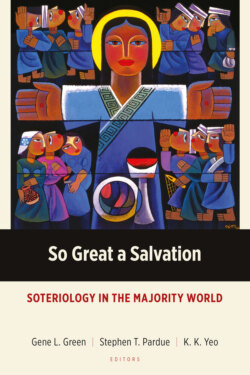Читать книгу So Great a Salvation - Группа авторов - Страница 26
На сайте Литреса книга снята с продажи.
Conclusion
ОглавлениеEven this brief overview of Jeremiah 31 underscores that the new covenant context of new creation should be more prominent than Western soteriologies suggest. Many recent biblical debates and traditional dogmatic concerns over personal justification and sanctification still have a significant place in that framework. But then we can distinguish their initially prominent, even somewhat central, dogmatic place from their becoming so central that they exclude other soteriological concerns as rivals. The communal and cosmic dimensions of God’s new covenant promises integrate Pauline theology and the rest of the New Testament more holistically. Attention to the new covenant further means reckoning with the Old Testament Scriptures, and thus Israel’s identity and hope, more adequately.
One way of engaging the Majority World perspectives reflected elsewhere in this volume goes beyond framing them merely in terms of alternative concepts, differing contexts, and critique of or even opposition to dominant Western patterns. All of those elements may be prominent. Yet Majority World accounts often provide examples of the narrative theology for which Western intellectuals have been calling—but with rather modest results of their own. By contrast, other chapters in the present volume frequently provide narrative density to problematic Western readings of the Bible—both those that have been directly colonizing and others that have myopically produced unintended consequences. At minimum, Majority World theologies put problematic aspects of dominant traditions under a narrative searchlight that can also highlight alternative ways of engaging biblical soteriology. At maximum, Majority World theologies raise challenging questions about the very conceptual forms dominating Western traditions, given their systematic aspirations. And Majority World theologies help us to imagine more concretely what the fullness of salvation might look like in particular human lives, communities, and local contexts.[36]
The communal and cosmic dimensions of the biblical hope for a new creation underscore not only the context for salvation’s personal dimensions and their complementary divine promises, but ultimately the fullness of Christian hope. They force us to reckon with the plight of so many people and other creatures in God’s world—neither indulging in self-justifying escapism, nor despairing of change, nor arrogating to ourselves another gospel of human making. God has promised a new creation starting with a new humanity—and that renewal begins with my own heart. But it does not end there: God renews my heart not only to receive forgiveness, return loving worship, and bear grateful witness. This renewal also frees me from bondage—to my idolatrous self and other powers—so that I may learn to love all my neighbors and thereby participate in the healing of all creation.
